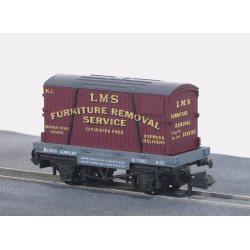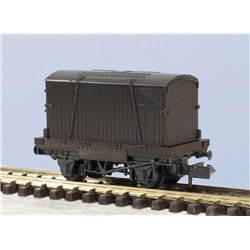This very much depends on the project you are working on. For painting the base coat I would say no it is not...
No products
Product successfully added to your shopping cart
There are 0 items in your cart. There is 1 item in your cart.
Search Tips
Christmas and New Year
We are dispatching orders every weekday apart from Christmas Day, Boxing Day and New Year's Day.
If you order is time critical, select next day delivery at checkout.
The shop in Sandown is closed from 25th December, reopening on 30th December.
What is meant by the term 'Conflat'?
The term "Conflat" is a contraction of the words "container" and "flat" and refers to a type of container flat wagon used for transporting goods in containers.
Conflat wagons feature a flat deck with fixed or removable fittings specifically designed to accommodate containers. These wagons typically have sturdy frames and securement mechanisms, such as twistlocks or clamps, to hold the containers in place during transportation. The containers themselves can vary in size and shape, representing different types of goods being transported.
Model railway enthusiasts often include conflat wagons on their layouts to represent the transportation of containerized cargo. These wagons can be found in various scales and liveries, reflecting different eras and regions of railway operations. They are commonly seen in freight yards, container terminals, or being hauled by locomotives as part of realistic freight operations on the model railway.
By incorporating conflat wagons into their model layouts, enthusiasts can add visual interest and realism to their scenes, depicting the vital role of containerized transportation in the movement of goods on the British railway network.
Click here to receive the tips weekly in your mailbox. You can unsubscribe at any time.










